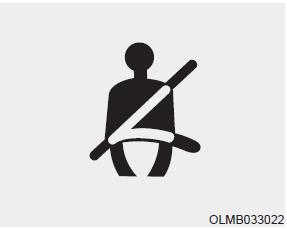Hyundai Ioniq: Hybrid Control System / Description and operation
The HCU (Hybrid Control Unit) controls whole hybrid systems and is connected with each control modules (ECM, TCM, MCU, BMS ECU etc.) by CAN interface. In addition this system uses the brake switch and Clutch Pressure Sensor (CPS) signals for controlling the hybrid system.
| •
| CAN interface is divided into hybrid and chassis CAN lines. |
|

The HCU controls power & torque distribution of the engine and motor, regenerative brake, and fail-safe mode based on the vehicle information, driver’s demand, engine information and high voltage battery information.

[HCU Main Functionalities]
Item
|
Functionality
|
Demand Torque Determination
| | •
| Driver Creep Demand Torque Calculation |
| •
| Driver Acceleration/Deceleration Torque Calculation |
| •
| Driver Total Demand Torque Calculation |
|
Regeneration Brake Control
| | •
| Regeneration Brake Demand Torque Control |
| •
| Regeneration Brake Estimated Torque Calculation |
|
EV/HEV Mode Determination
| | •
| Engine Crank Condition Determination |
| •
| Engine Target Operating Status Determination |
|
Battery SOC Balancing
| | •
| Electric Power Limitation |
| •
| Charge/Discharge Power Determination |
| •
| Auxiliary System Power Limitation and Compensation |
|
Engine Operating Point Determination
| | •
| Engine Target Speed Determination in Idle Load |
| •
| Engine Target Torque Determination in Part Load |
| •
| Engine Target Torque Determination in Full Load |
| •
| Engine Target Torque Determination in Engine Stop or Passive Run |
|
Idle/Racing Charge Control
| |
Engine Start / Stop Control
| | •
| Speed Control for Cranking Engine |
| •
| Engine Firing Complete Determination |
|
Engine Clutch Engage/Slip/Release Control
| | •
| Engine Brake Engage Control |
|
Torque Coordination Control
| | •
| Engine Torque Determination in Transient State |
| •
| Motor Torque Determination in Transient State |
| •
| Generator Torque Determination in Transient State |
|
Torque Invention Control
| | •
| Torque Increase/Decrease Determination |
|
Anti-Shock Control
| | •
| Parabolic Torque Restriction |
| •
| Engine Clutch Slip Control |
|
System Limit Control
| | •
| Battery Charge/Discharge Limit Control |
| •
| Engine, Hybrid Drive Motor, HSG Torque Limit Control |
|
Torque Monitoring
| | •
| Hybrid powertrain torque monitoring |
|
Fail-Safe
| | •
| Hybrid control system fail-safe control |
|
Auxiliary System Control
| | •
| Electric Oil Pump Control |
| •
| Variable Voltage Control of Low Voltage DC/DC |
|
SpecificationsBrake Switch▷ Type : ON/OFF Switch▷ Specification
Item
Brake Pedal Release
Brake Pedal Push
Switch 1 Max...
Other information:
DescriptionThe EPB is an electronic parking brake. The EPB is different from existing parking systems which operated with the brake pedal or the lever type. The EPB system sends the signal to the ECU when a driver operates the EPB switch. The ECU operates the EPB actuator composed with motor gears...
C..
Categories
Seat belt warning light

As a reminder to the driver, the seat belt warning light will illuminate and
warning chime will sound for approximately 6 seconds each time you place the Engine
Start/Stop button to the ON position if the seat belt is unfastened.
read more


 Specifications
Specifications


